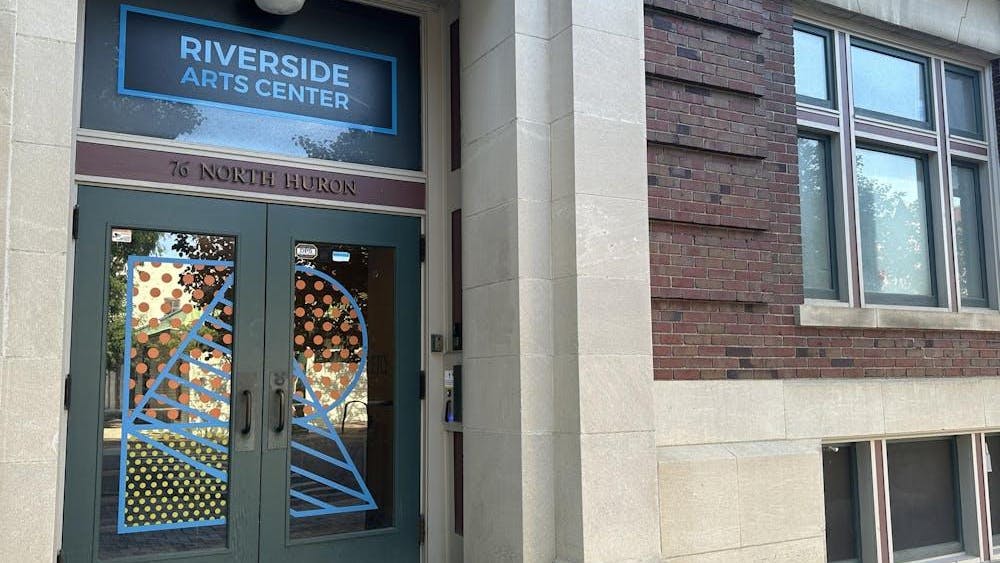Oct. 14 was a good day for bicyclists and motorcyclists, when Governor Rick Snyder signed Public Act 317, also known as Nathan’s Law, to add information about bicycle and motorcycle awareness to the Michigan drivers’ education curriculum.
The act, passed the Michigan House unanimously in June, was named after Nathan Bower, a 19-year-old who was killed in a motorist/motorcyclist accident in 2009. American Bikers Aiming Toward Education, Programs to Educate All Cyclists and the League of Michigan Bicyclists were instrumental in passing the legislation by helping spread the word and open dialogue throughout the state.
“Cars don’t always look for bicycles in the road,” said James Kleimola, an Ypsilanti resident and Programs to Educate All Cyclists activist. “I want roads to be safe for everyone who is on them.”
Kleimola bicycles regularly around Eastern Michigan University as his main mode of transportation and was a co-signer to the bill along with Snyder, the Bower family and others.
“All of us who are behind the wheel are responsible for being aware that we hold the lives of others in our hands as we drive,” said State Representative Terry Brown (D-Pigeon) on LMB’s webpage. “I appreciate the hard work of so many individuals and organizations and the bipartisan manner that has led to the governor's signing of this law on Nathan's birthday.”
The goal is for all motorists to acknowledge their surroundings and effectively share the road with cyclists while driving. According to the Office of Highway Safety Planning, 27 bicyclists were killed in Michigan in 2013, a 35 percent increase from 2012. Additionally, 1,479 bicyclists were injured during that time, which does not include reports of physical and verbal harassment by drivers.
“Learning to share the road with bikes and motorcycles is a very important lesson for new drivers to learn,” Brown told the Sanilac County News. “If we instill the need to share the road at a young age, we could prevent many accidents and fatalities.”
House Bill 4792 offers sentencing guidelines for the crime of committing a moving violation causing death to vulnerable roadway users, bicyclists, pedestrians and wheelchair users, while House Bill 5080 addresses specific penalties for moving violations causing physical injury or death to the less protected users of the road.
Representatives Ed McBroom (R-Vulcan) and David Nathan (D-Detroit) proposed these bills to enact penalties similar to those already in existence for construction workers, agricultural workers and school zone violations.
“Despite the bills [4792 and 5080] passing unanimously out of committee, and hearing from over 1,100 bicyclists this summer, Speaker Bolger has refused to schedule the bills for a floor vote,” said John Lindenmayer, LMB’s advocacy director.
These bills would make it a crime to maim or kill motorcyclists and bicyclists, currently acts that are not recognized as punishable by law in Michigan and many other states.
House Bill 4866 is also pending approval. Sponsored by Representative Anthony Forlini (R-Harrison Township), it was another bill the House voted unanimously for. It was created to give bicyclists the option of signaling a right turn by extending their right arm horizontally.
“When I signal a turn in the traditional way, some drivers think I am waving at them and wave back,” Forlini said. “If a right-hand signal is put in use, bicyclists and motorists will understand the signal, and the road will be safer for all concerned.”
Cyclists can signal a right turn with an L position by extending their left arm upward. This gesture was developed for automobile drivers before there were electric turn signals because it was impossible to signal with a right arm out the window.
Nathan’s Law offers change to Michigan driving curriculum, but the number of teens taking drivers training courses is declining.
The bills-in-waiting not only raise awareness and education on public road standards, but move to address the often shift in blame from driver to victim, and improve the legal recourse of victims of roadway user’s negligence.









